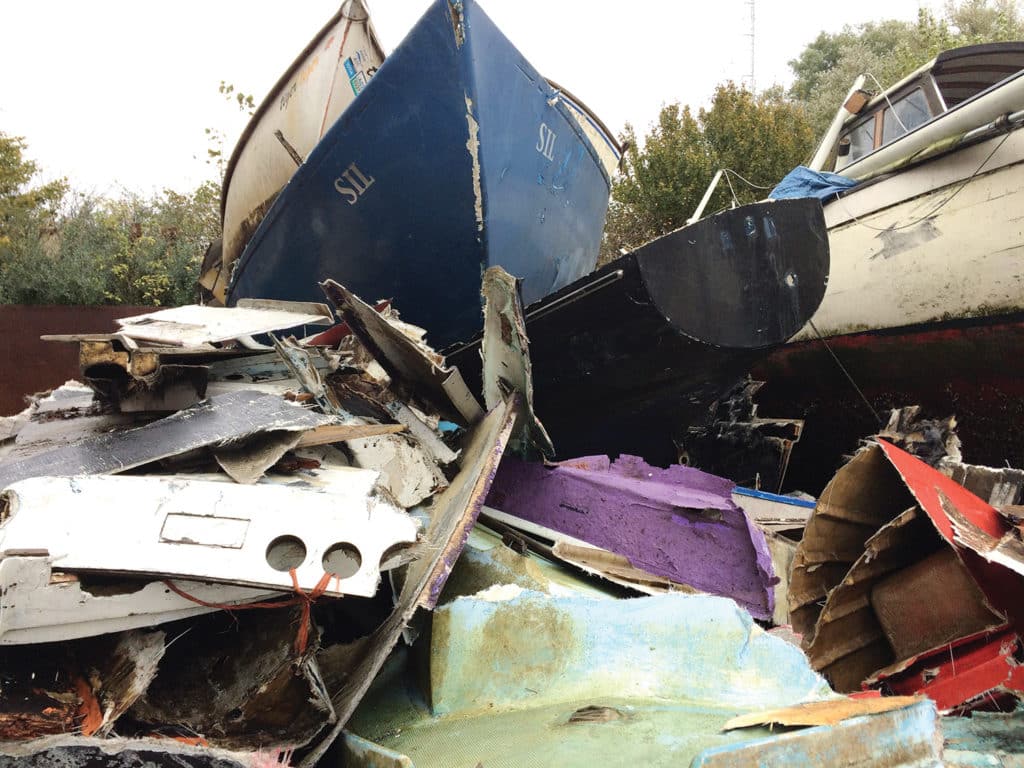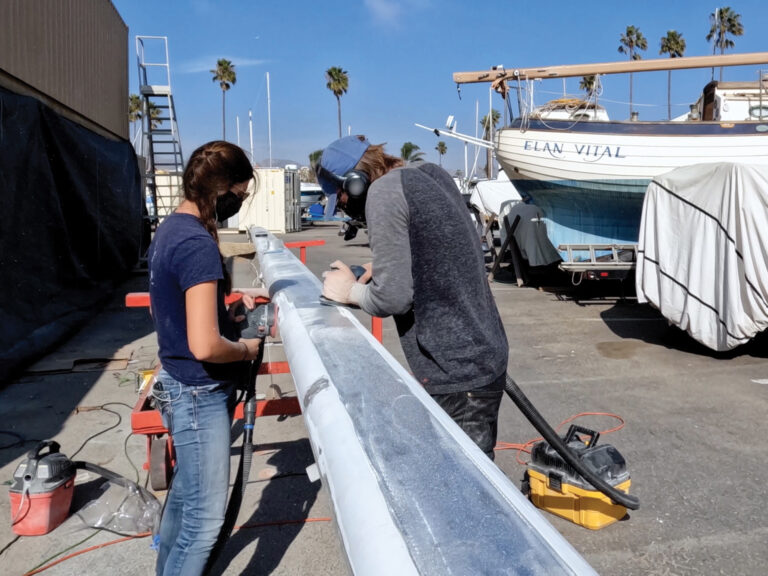
Sailing legend holds that the celebrated yacht designer L. Francis Herreshoff commonly referred to fiberglass as “frozen snot,” a rather pejorative term for one of the easiest and most cost-effective materials afloat for building sailboats. Trouble arises, however, when it’s time to permanently unbend a boat’s sails, since well-crafted fiber and resin lasts virtually forever and is notoriously hard to recycle. As a result, many tired old boats end up as landfill fodder.
In fact, the Rhode Island Marine Trades Association (RIMTA) estimates that some 1.5 million fiberglass boats were retired in the U.S. between 2003 and 2012, and that’s saying nothing of the eye-watering toll that’s been extracted by recent hurricane activity in weather-battered states like Florida and the Carolinas. Fortunately, RIMTA and Rhode Island Sea Grant created the Rhode Island Fiberglass Vessel Recycling Pilot Project to explore ways of sustainably deconstructing glass-reinforced-plastic hulls and recycling the fiberglass into cement.
The pilot project is currently working with local Rhode Island boatyards to recycle 20 to 30 metric tons of fiberglass, while also partnering with various agencies to create a physical process that meets all local, state and federal health and safety requirements.
This recycled material will be tested in a specialized cement kiln later this year. Additionally, the RIFVR Pilot Project is conducting a cost-benefit analysis, researching any legislation and regulations that could be implemented to support fiberglass-recycling programs, and carefully documenting the process.
“We are continuing to answer critical questions surrounding the life cycle of recreational boats and the sustainable reuse of fiberglass waste,” said Evan Ridley, the program’s project manager. “Boats constructed with composite materials offer an incredible opportunity for our state to establish a new network for the collection and recycling of high-value waste derived from thousands of other composite-based products currently being landfilled.”
While it’s important to note that the RIFVR Pilot Project is just taking its nascent steps, if things go well, the project could eventually be rolled out regionally and nationally.
Likewise, a project that starts with recreational boats could potentially evolve into a sustainable methodology for recycling all manner of frozen snot.








